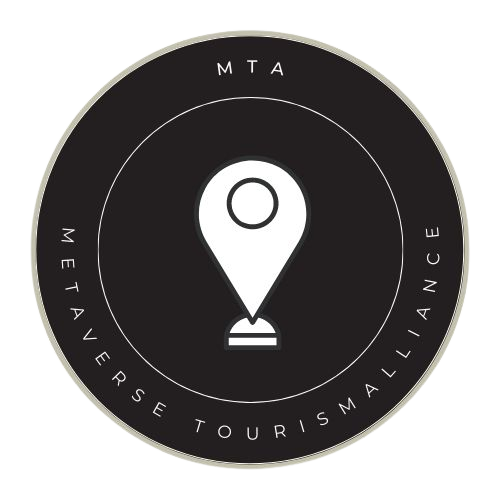Last week we sat down with travel experts Graeme Stevens and Sam Simmons to discuss the role of technology in motivating future travel behavior as part of our Future of Travel Webinar Series. Stevens believes that having the right technology or Metaverse offering to act as gateway so that people experience a destination before they go is the future of travel.
Imagine you’re sitting at home but at the same time you are strolling through the bustling streets of Tokyo. You can hear the chatter of locals, smell the aroma of freshly made ramen, and even peek inside shops filled with quirky gadgets. You haven’t booked a flight, packed a suitcase, or even stepped out of your living room, but you’ve just had a taste of what it’s like to be in Japan. Welcome to the future of travel, where the metaverse is turning ‘try before you fly’ from a marketing gimmick into a standard part of planning your next adventure.
The Hybrid Future of Travel
The pandemic has forced the travel industry to innovate rapidly, leading to a surge in virtual experiences that kept our wanderlust alive while borders were closed. But now, as the world opens up, these digital previews aren’t just fading away—they’re evolving into a hybrid model that blends virtual exploration with physical travel. The metaverse, a collective virtual shared space that blurs the lines between the digital and physical worlds, is at the heart of this transformation.
According to a 2023 report by Statista, the global market for virtual reality in travel and tourism is expected to reach $304 billion by 2028. This explosive growth indicates a significant shift in how consumers are engaging with destinations before they even book a ticket. In fact, a survey by Travelport found that 48% of travelers are more likely to visit a destination after experiencing it virtually.
Virtual Travel extends the teaser style marketing
In the past, travel marketing was limited to glossy brochures, Instagram feeds, and well-crafted videos. While these tools are still effective, they can’t compete with the immersive power of the metaverse. Virtual reality (VR) and augmented reality (AR) allow potential travelers to experience a destination in a way that was previously impossible.
Whether it’s taking a 360-degree tour of the Louvre, hiking through Patagonia, or even diving into the Great Barrier Reef, these virtual experiences offer a level of engagement that traditional marketing methods simply can’t match.These experiences are more than just a sneak peek; they’re a way to build confidence and excitement, helping travelers feel like they’ve already been there, making the decision to book a flight much easier.
The Psychology Behind ‘Try Before You Fly’
Why is this hybrid approach so effective? It taps into the psychology of trust and familiarity. Traveling to a new place can be intimidating, especially for those with concerns about safety, language barriers, or simply the unknown. The metaverse helps alleviate these fears by allowing travelers to “test drive” their trip.
A study by GlobalData in 2023 revealed that 62% of travelers feel more confident about visiting a new destination after exploring it virtually. This confidence translates directly into bookings, with many travel companies reporting a significant increase in conversions among customers who engaged with their virtual content.
Building Awareness, One Virtual Step at a Time
For lesser-known destinations, the metaverse offers a unique opportunity to break through the noise and reach a global audience. Places that may not have the marketing budgets of Paris or New York can create virtual experiences that showcase their unique attractions, drawing in curious travelers who might not have considered them otherwise.
For instance, the small town of Hallstatt in Austria, known for its picturesque alpine scenery, saw a 30% increase in tourism inquiries after launching a virtual tour that allowed users to explore its charming streets, crystal-clear lake, and surrounding mountains. These kinds of successes are becoming more common as destinations leverage the power of virtual previews to increase awareness and drive interest.
A report by Deloitte in 2023 found that travel companies utilizing metaverse experiences saw a 35% increase in customer engagement and a 25% boost in conversion rates. Additionally, the cost of producing and maintaining virtual content is often lower than traditional marketing campaigns, offering a higher return on investment (ROI).
Challenges on the Road Ahead
However, the journey to a fully hybrid travel experience isn’t without its challenges. The digital divide means that not everyone has access to the technology needed to participate in the metaverse. Ensuring that these experiences are accessible to a broad audience will be crucial for destinations looking to capitalize on this trend.
Moreover, there’s the question of authenticity. Virtual experiences can be so polished and idealized that they risk setting unrealistic expectations. Destinations must strike a balance between showcasing their best features and providing an accurate representation of what travelers can expect in real life.
Ethical considerations also come into play. Representing cultures and communities in the metaverse requires sensitivity and respect to avoid cultural appropriation or misrepresentation. As the technology evolves, so too must the standards and practices that guide its use.
The next decade could see a seamless blending of the virtual and physical travel experiences. Imagine arriving at your destination with a VR-enhanced itinerary that guides you through the city, offering historical insights, language translations, and even real-time recommendations based on your preferences. Or perhaps you’ll be able to relive your trip virtually, revisiting your favorite spots long after you’ve returned home.
As the travel industry continues to evolve, those who embrace the hybrid future of travel will be best positioned to thrive. Join us at the MTA to explore and discover the opportunities in our hybrid future.

